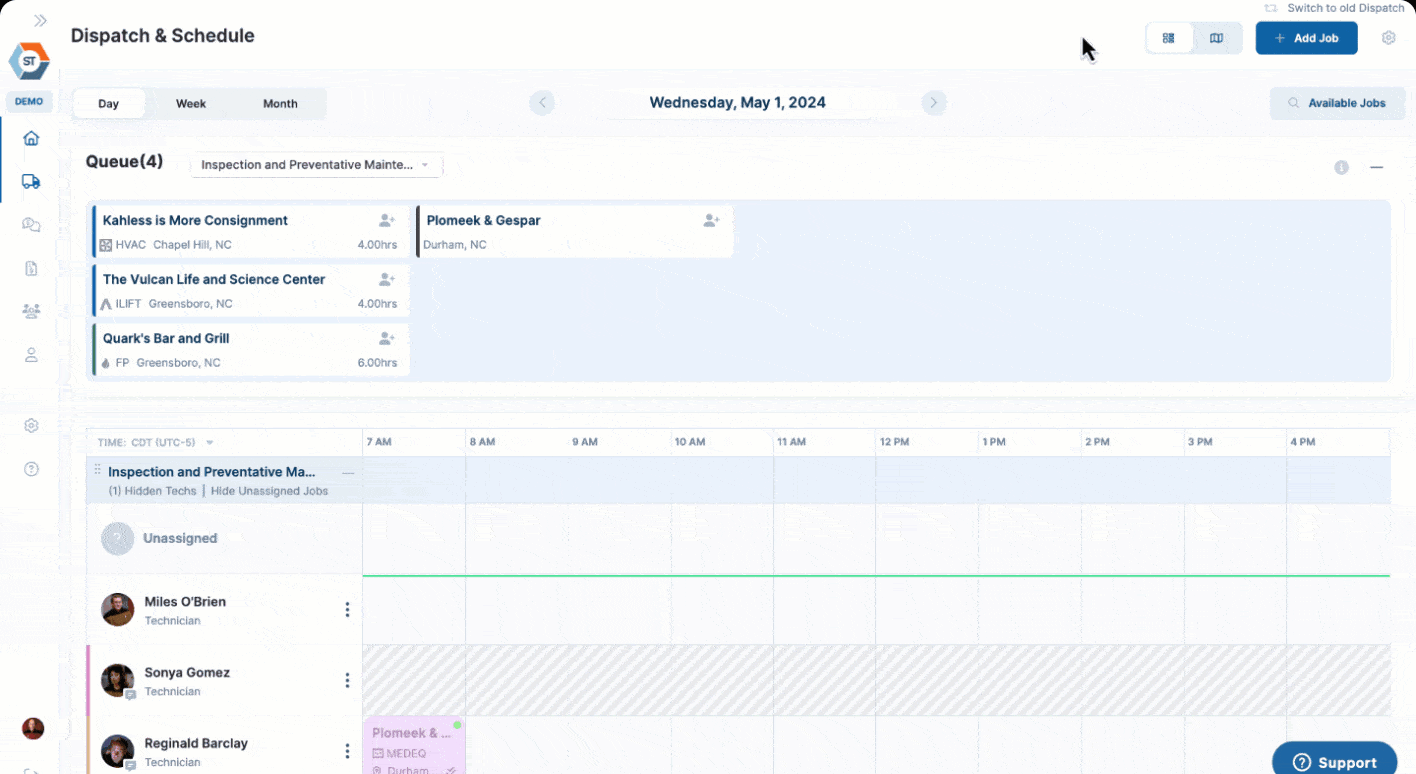Picture this: a thriving HVAC business with optimized profit margins, efficient staff performance, and smooth operations. How can your commercial HVAC business achieve this level of success? The answer lies in the power of business analytics. In this article, we will explore the different types of business analytics that HVAC businesses can use to unlock their full potential, the benefits of implementing these analytics strategies, and actionable tips on how to deploy business analytics effectively.
The Different Types of Business Analytics for HVAC Businesses
In today’s fast-paced and competitive business landscape, HVAC businesses face the challenge of not only delivering exceptional service to their commercial clients but also optimizing profit margins, enhancing staff performance, and streamlining operations. The key to achieving these goals lies in harnessing the power of business analytics. By leveraging various types of business analytics techniques, HVAC businesses can gain valuable insights into their past performance, diagnose the root causes of issues, predict future outcomes, and make informed decisions to drive success. In this section, we will explore the different types of business analytics that HVAC businesses can employ to unlock their full potential and elevate their performance to new heights.
To improve profit, staff performance, and operations, HVAC businesses can leverage various types of business analytics techniques:
Descriptive Analytics
Descriptive analytics provides a retrospective view of the business by analyzing historical data, allowing businesses to gain insights into past performance and trends. HVAC businesses can use descriptive analytics to identify patterns in customer behavior, service requests, and operational performance.
Diagnostic Analytics
Diagnostic analytics involves identifying the reasons behind certain events or patterns derived from descriptive analytics. HVAC businesses can use diagnostic analytics to diagnose the root causes of issues like declining profitability, ineffective staff performance, or recurring operational problems.
Predictive Analytics
Predictive analytics employs statistical techniques and machine learning algorithms to make predictions about future outcomes based on historical and current data. HVAC businesses can use predictive analytics to forecast customer demands, predict equipment failure or maintenance needs, and streamline inventory management.
Prescriptive Analytics
Prescriptive analytics takes predictive analytics further by suggesting the best course of action to optimize business outcomes. HVAC businesses can use prescriptive analytics to make informed decisions based on recommended strategies, such as assigning optimal staff schedules, prioritizing service calls, or optimizing resource allocation.
The Benefits of Business Analytics for HVAC Businesses
In today’s data-driven world, harnessing the power of business analytics has become a game-changer for businesses across various industries. This rings especially true for HVAC businesses looking to thrive in a highly competitive market. By implementing business analytics strategies, HVAC businesses can unlock a myriad of compelling benefits that can significantly enhance their operations, profitability, and overall success. From making informed decisions based on data-driven insights to precise forecasting and improved performance monitoring, the advantages of business analytics are plentiful. In this section, we will explore the numerous benefits that HVAC businesses can attain by harnessing the power of business analytics and how it can accelerate their journey towards sustainable growth and success.
Implementing business analytics provides several compelling benefits for HVAC businesses:
- Enhanced Decision-Making: Business analytics equips HVAC businesses with data-driven insights to make informed decisions. With accurate and timely data, it becomes easier to identify opportunities, prioritize investments, and allocate resources effectively.
- Precise Forecasting: By utilizing predictive analytics, HVAC businesses can forecast customer demands, allowing for better planning of workforce and inventory. This enables efficient scheduling, reduces downtime, and ensures optimal customer service.
- Improved Performance Monitoring: Business analytics tools enable the monitoring of key performance indicators (KPIs) in real-time. HVAC businesses can track metrics such as profit margins, customer satisfaction levels, and staff productivity, allowing for proactive identification of areas needing improvement.Streamlined Operations: With insights gathered from business analytics, HVAC businesses can optimize their operational processes. By identifying bottlenecks, streamlining workflows, and allocating resources strategically, businesses can increase efficiency and reduce costs.
In conclusion, business analytics is a powerful tool that can transform the commercial HVAC industry. Its ability to improve operational efficiencies, facilitate informed decision-making, and drive growth is invaluable in today’s highly competitive business landscape. By harnessing this tool, businesses can unlock a wealth of opportunities that can set them apart from their competitors. As the importance of data-driven insights continues to grow, HVAC companies that implement business analytics strategies will emerge as market leaders. Therefore, it is crucial for HVAC businesses to embrace and deploy business analytics strategies to optimize their operational processes, foster data-driven decision-making, and drive success through long-term growth and profitability.
How to Deploy Business Analytics Strategies in a Commercial HVAC Business
Deploying business analytics strategies is a critical step towards optimizing the performance and profitability of a commercial HVAC business. However, without a cohesive plan, it can be challenging to know where to begin and how to successfully implement these strategies. Fortunately, as the benefits of business analytics become more evident, industry leaders have identified actionable tips to help businesses successfully deploy these strategies. In this section, we will explore five actionable tips that commercial HVAC businesses can use to optimize their operational processes, foster data-driven decision-making, and drive success through business analytics strategies. By following these tips, HVAC businesses can leverage the power of data insights to elevate their performance and achieve long-term success.
- Gather and Organize Relevant Data: Identify the data sources that are crucial for analyzing HVAC business performance, such as financial records, service logs, customer feedback, and operational data. Ensure data is clean, accurate, and organized in a centralized system for easy access and analysis.
- Choose the Right Analytics Tools: Research and invest in business analytics tools that suit the specific needs of your HVAC business. Look for user-friendly interfaces, robust reporting capabilities, and the ability to integrate with existing systems. This will facilitate data analysis and generate meaningful insights.
- Set Measurable Goals: Define clear and specific goals for your HVAC business, such as improving profit margins, reducing service response time, or enhancing customer satisfaction. Use these goals as a benchmark when analyzing analytics data to measure success and identify areas for improvement.
- Foster a Data-Driven Culture: Encourage your team to embrace data-driven decision-making. Provide training on analytics tools and techniques, and emphasize the importance of using data to drive insights and actions. Foster a culture that seeks answers in data, rather than making decisions based on intuition alone.
- Continuously Monitor and Refine Strategies: Business analytics is an ongoing process. Regularly monitor KPIs, review performance trends, and refine strategies accordingly. Leverage analytics insights to identify areas of opportunity, evaluate the effectiveness of implemented changes, and adjust course if necessary.
By leveraging the power of business analytics, commercial HVAC businesses can unlock their full potential for success. From descriptive and diagnostic analytics to predictive and prescriptive analytics, the different types of analytics provide valuable insights into profit optimization, staff performance, and operational efficiency. With enhanced decision-making, precise forecasting, improved performance monitoring, and streamlined operations, HVAC businesses can thrive in today’s competitive market. Implement the actionable tips discussed in this article, and unlock the true potential of your HVAC business with the transformative power of business analytics.

